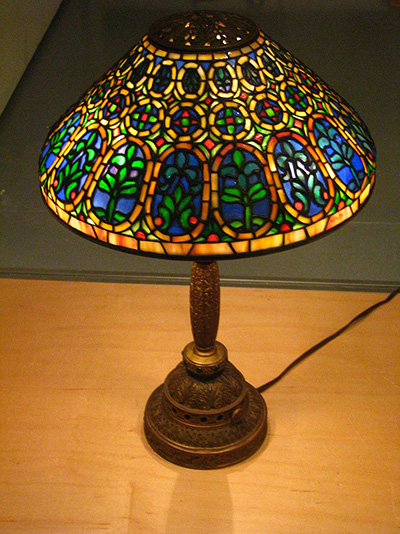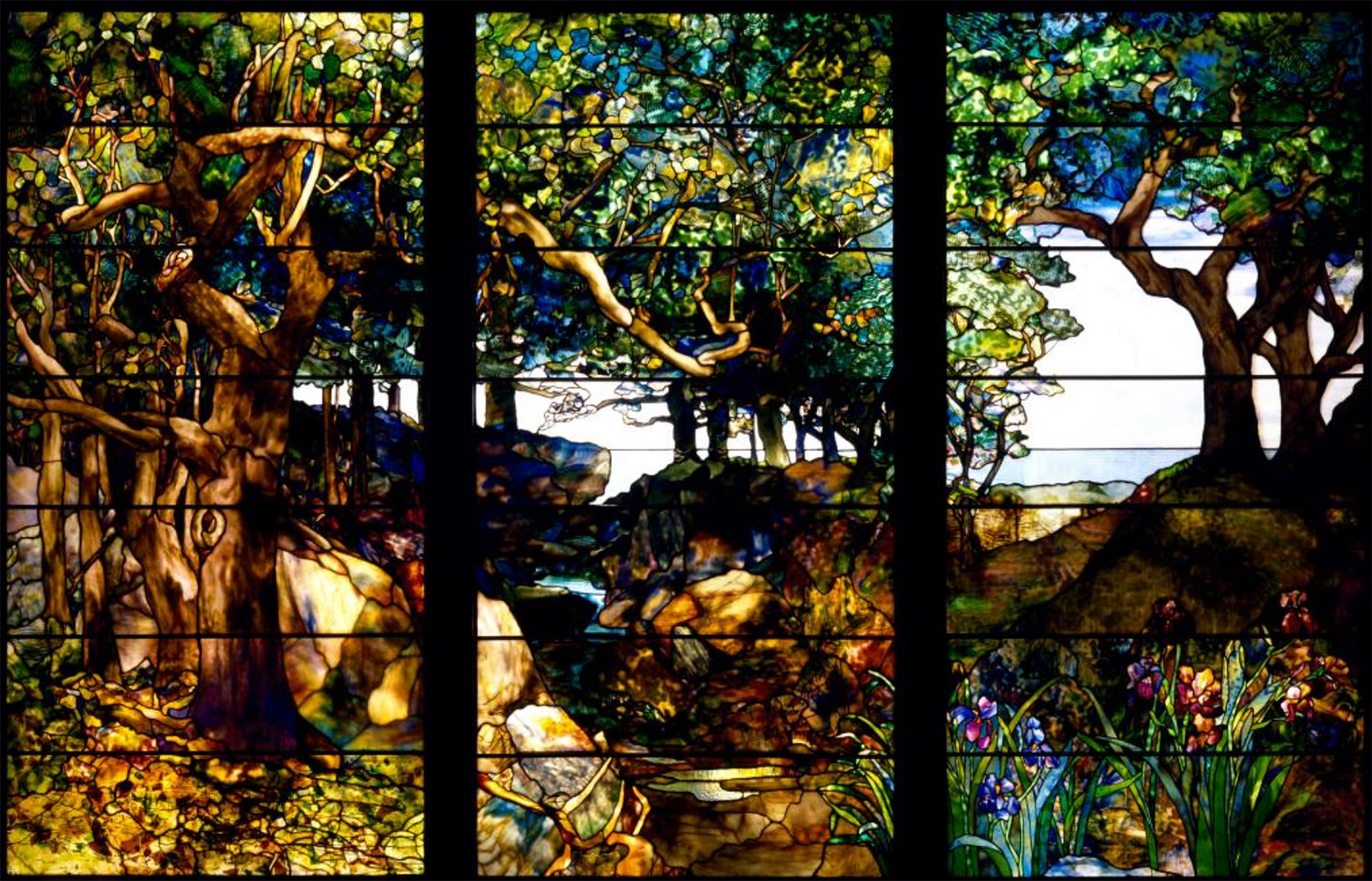
Glasses are an amorphous material and usually but not always transparent. Most glasses are based on silica, SiO2, which is heated to melting and then formed into various shapes while still hot. The silicon atoms are tetrahedral and each is bound to four oxygen atoms, each of which bridges to another silicon atom. In the glass form of SiO2, there is no long range order in the arrangment of the network of Si and O bonds. This contrasts with quartz crystals, which have a definite and ordered arrangement of these bonds (see Silica-based Gemstones: Quartz, Rose Quartz, Amethyst and Citrine). There is a wide variety of glasses based on it composition, which can include the borosilicate glasses, leaded glass and pure silica, which is quartz glass. The different compositions have different melting points and working temperatures (Table of Glass Compositions and Properties). Lead glass crystal was quite popular form making cut glass goblets, decanters, bowls and vases because of its clarity, but lead can leach from glass slowly, so liquids - especially those containing alcohol - should not be stored in lead glass crystal for any length of time.
Coloring glass was developed to an high art during the Middle Ages for its used in stained glass windows for cathedrals and other important buildings. Often the colors are due to the presence of different metal ions and that color was highly dependent on the oxidation state of the ions. The presence of iron will produce green glass if both Fe2+ and Fe3+ are present, but having all Fe3+ will result in yellow to deep brown glass such as that used in drink bottles. Ancient Roman glass often has a slight green color due to the presence of iron. Deep blue glass results when cobalt is added. Manganese can produce yellow (Mn2+) or purple colors (Mn3+), while a mixture of the two oxidation states results in pink glass. Copper in its low oxidation state would produce red glass, while Cu2+ gives a deep blue glass. The relative amounts of the metal oxidation states would be controlled by controlling the environment in which the glass was prepared. An atmosphere rich in oxygen would produce the higher oxidation states, while reducing environments would favor the lower oxidation states. Recently, scientists have also discovered that some stained glass colors from the Middle Ages were due to gold or silver nanoparticles (small aggregates of metal atoms less than ~100nm, or 100 x 10-9m). The nanoparticles were obtained by adding gold chloride or silver nitrate to the glass. Because these are both noble metals and hard to oxidize, upon melting the glass would, the metals are reduced and the resulting metal atoms aggregate to give nano-sized particles. Gold produces a brilliant red color and silver gives bright yellow.

_MET_DP108438.jpg)
Ceramics include pottery and porcelain made from clays, which are a type of aluminosilicate mineral. While clays are easy to shape into a variety of forms when wet, after drying and heating in a kiln, they become quite hard and water tight. The hardening process involves the removal of water between the aluminosilicate structures that links them into a covalent network of aluminum, silicon and oxygen ions. The resulting network is much harder than the starting material. Transition metal ions such as iron can also be found in these structures, and this will give the clay a red or brown color. One of the challenges in making fine porcelain was to create a clay ceramic that was free of iron so that the color would be pure white.
Clay-based ceramics fall into three general classes: earthenware, stoneware and porcelain. Earthenware is a clay object that has been heated in a kiln in a process known as 'firing' that is done at a relatively low temperature (up to about 1200°C). Earthenware will still absorb water. A common examples is a clay pot for planting flowers. Stoneware results from firing at a slightly higher temperature up to ca. 1300°C, while fine porcelains are generally fired at even higher temperatures, 1200-1400°C. The actual temperature ranges used will depend on the clay that is used. The production of fine porcelain that is white and translucent was first prepared by the Chinese. This type of product uses kaolin clay that is low in the metal ions that give common clays their color. The definition of porcelain that is used in describing Chinese pottery is not uniform so that the exact date of the first official Chinese porcelain is up for some debate. The development of porcelain appears to have begun as early as ca. 200 B.C. and by about 200 A.D., the Chinese had developed kilns that would achieve temperatures up to 1300°C. Chinese porcelain making was unrivaled for centuries and large quantities were exported to Europe. Because of the cost and size of the European market, efforts began in Europe to break the Chinese porcelain monopoly. In the early 1700s, the first European hard-paste porcelain was developed in Meissen. This was followed by other countries where manufacturers such as the French Manfacture de Vicennes. This company was relocated in the 1750s to Sèvres, and the new styles it produced had become very popular by the 1760s under the guidance of Madame du Pompadour.

One example of a clay is montmorillonite whose structure is shown in the figure. As with many clay minerals, the structure is composed of layers of aluminosilicate slabs with metal ions such a calcium, sodium, potassium and magnesium in their common oxidation states (Ca2+, Na+, K+, Mg2+) intercalated between the layers. The type of representation show in the figure is known as a polyhedral representation in which the faces of the polyhedron surrounding a metal ion are illustrated in color. It shows the coordination polyhedra around some of the metal ions, in this case the silicon, aluminum and magnesium. Each silicon (dark blue) is bonded to four oxygen atoms that form a tetrahedron with the Si in the center, while the aluminum (light blue) is bound to six oxygen atoms in an octahedral arrangement. The magnesium ions (yellow) are also octahedral.